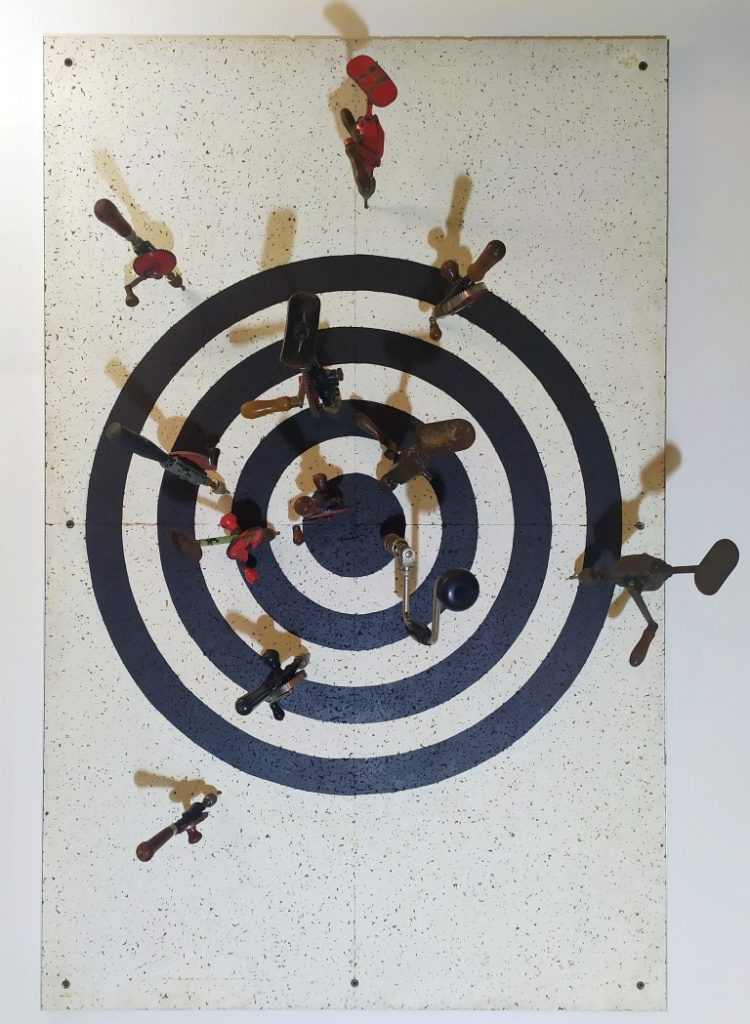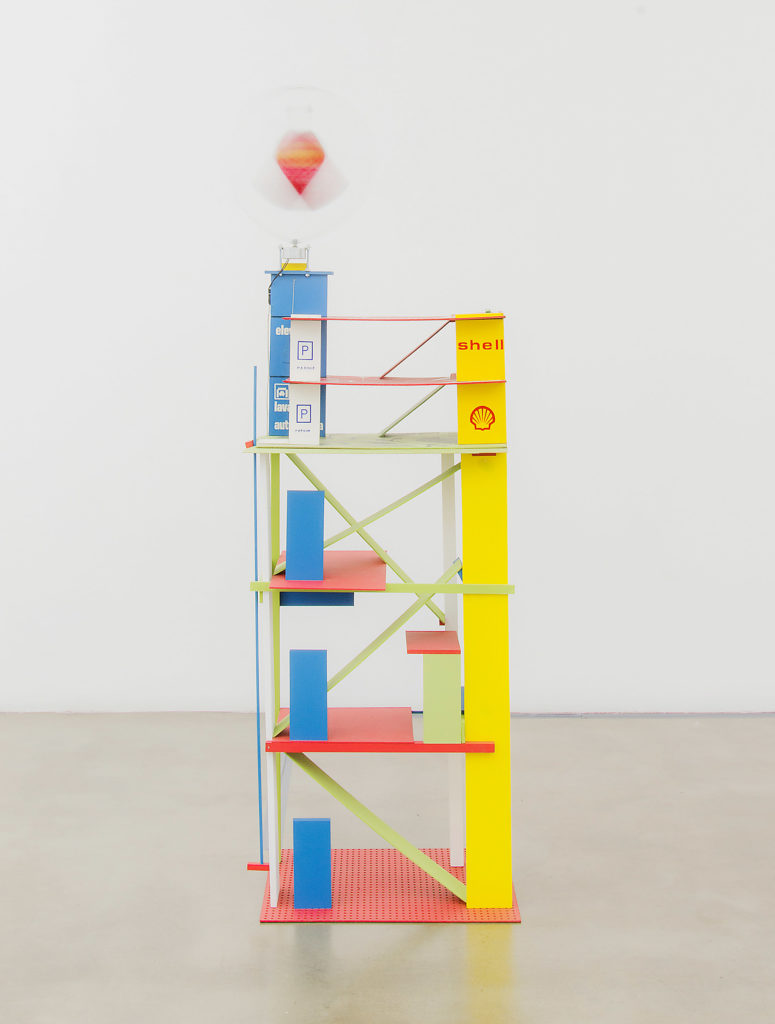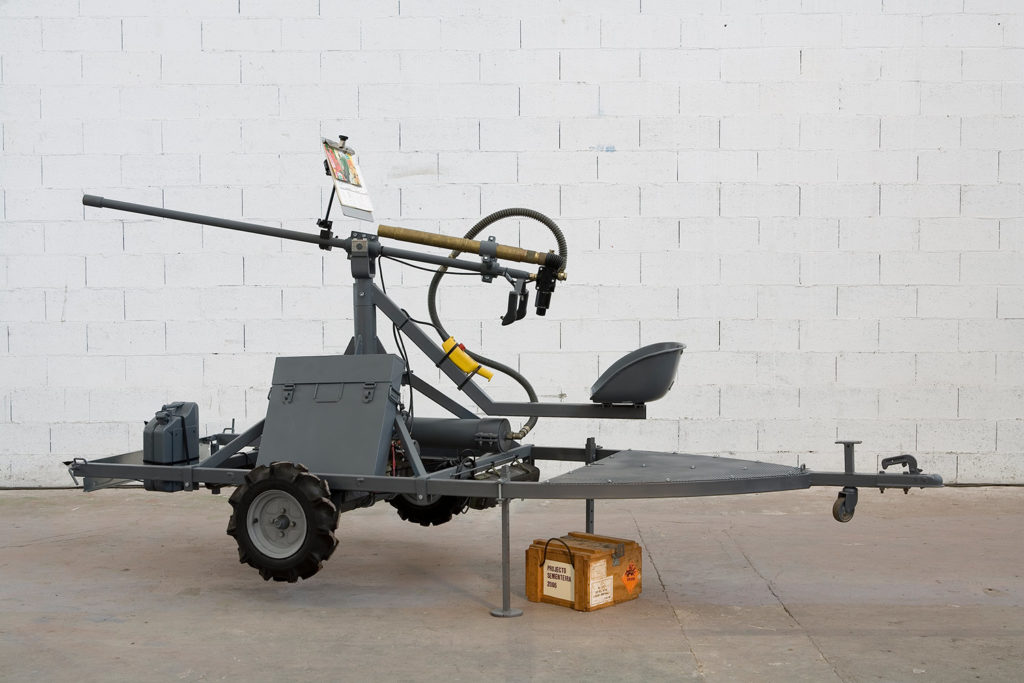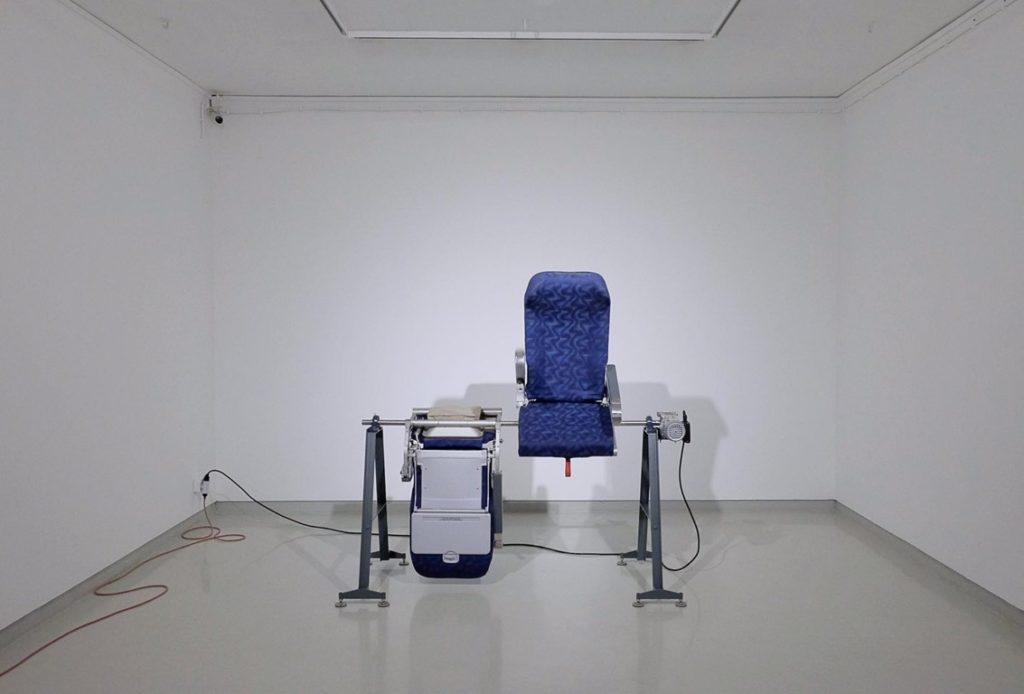Airplane series #9, 2007

Alvo (Target), 2019

Twelve drills fixed on an MDF board where a black target was painted. The legacy of neo-dadaism permeates the work of Miguel Palma and is evident in this piece. The reimagination of a target stuck with arrows, replacing them with manual drills, translates an idea of non-objective objectives.
In the art world, the complexity of the objectives empties them of a qualitative or quantitative function, in contrast to what would happen in a job whose goal is to get somewhere bigger and better. In the art world, the goals are almost divergent, multiple. In this case, the perplexity is greater due to the “arrows”: an object that wants to be light, accurate and fast, here it is replaced by a manual
drill, a kind of slow-motion of the idea of something that flies towards a target .
Shell (Garage Kit) #1, 2015

Compressão (compression), 2009

Inflatable globe clamped between the “teeth” of a tripod. This image of the suffocated and stressed globe is an organic dystopia, several times addressed by Miguel Palma. The pressure that Humanity exerts on the Earth in multiple forms is mirrored in this piece and raises an importante question: how much more can we consume the planet’s resources until it explodes?
As a symbol of the Anthropocene, this sculpture provokes a thoughtful reflection on our relationship with the environment.
Sowing Project, 2006

This project was carried out in Vila Franca de Xira in 2006, at the same time as the exhibition The Return of the Real at the Museum of Neo-Realism. It consisted of a performance during which the artist fired seeds onto an empty plot of land using this apparatus. A video (color, sound, 5’45”) was also produced to record the process. Silkscreen prints were made from photographs of the performance, The colors evoke the camouflage uniforms worn by soldiers, mirroring the apparent brutality of the device used. Indeed, it does resemble a weapon of destruction; however, here it is decontextualized and used as a weapon of creation.
Volta ao mundo, 2017

This sculpture takes up one of the fundamental themes of Miguel Palma’s work: fascination with the aeronautical world. Here, two commercial aircraft seats are connected by a rotating axis that moves them in an infinite cycle. There is a clear joke with the idea popularized in Jules Verne’s novels of a world tour through the title and the turn that the chairs actually make.
The rethinking of this fundamental object for the aerial transport, which would be the one that allows us to travel the globe more quickly, is reflected in the hypnotism of the piece: the chairs rotate at a constant pace of 6 turns per minute, but out of phase with each other. The noise of the tables at the backs of the chairs breaks the tension created by the imminent sensation of a possible disaster, heightened by the immediate association between the seats and passengers, and their dependence on external forces to guarantee their transport and survival.
Mapas, 2007

Edson Chagas, Muxima
Edson Chagas, Muxima
